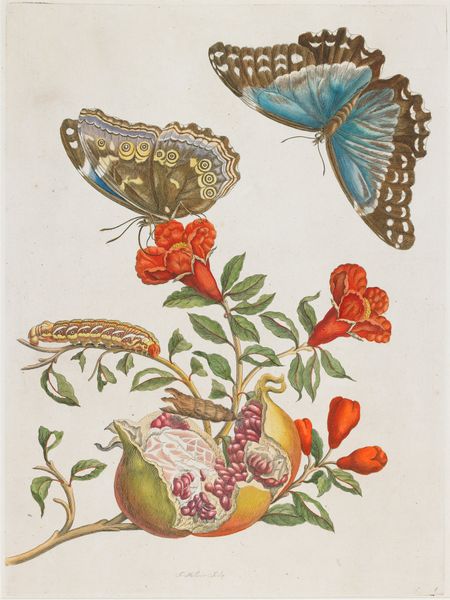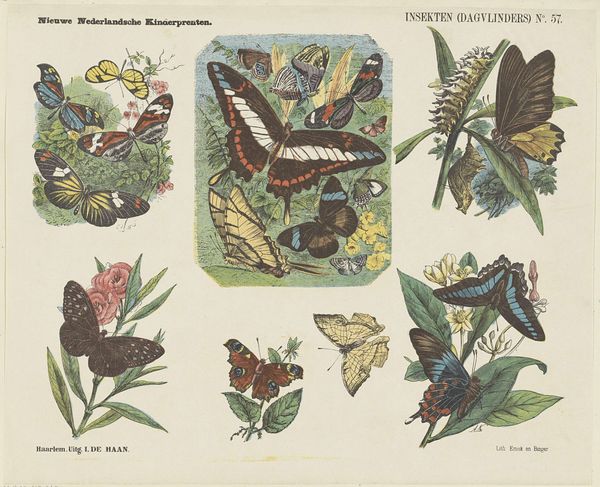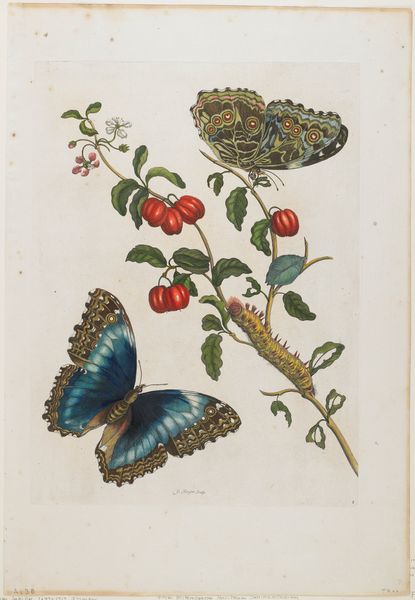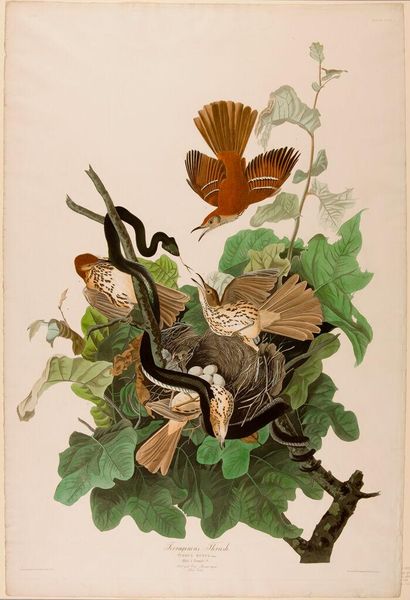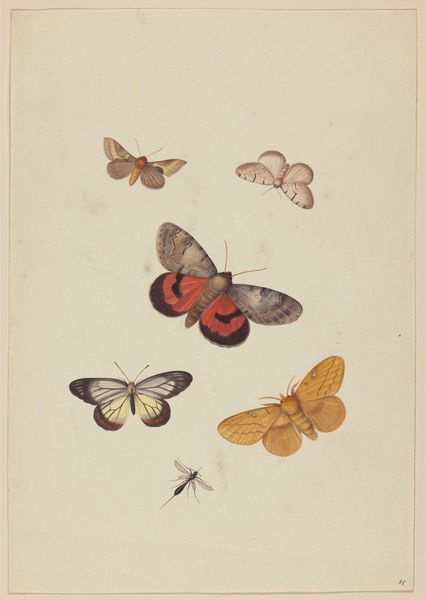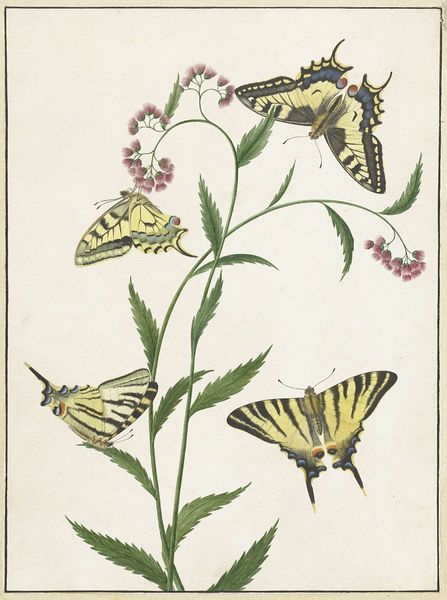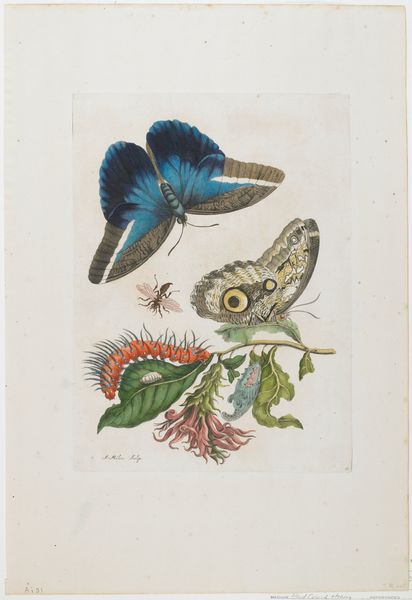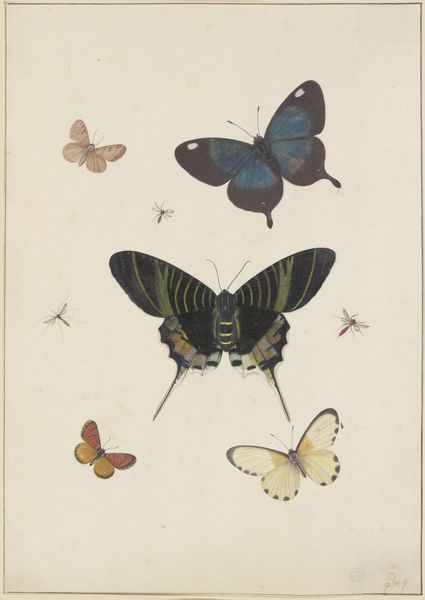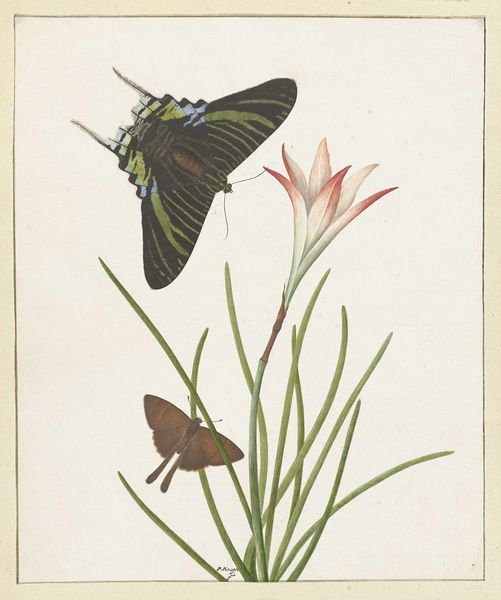
Dimensions: height 439 mm, width 343 mm
Copyright: Rijks Museum: Open Domain
Editor: This lithograph print titled "Butterflies," created by Arie Willem Segboer sometime between 1903 and 1919, is really fascinating. I love the different arrangements of butterflies and foliage in each quadrant. How do you interpret this work? Curator: I see this as a study in the labor of representation. Note the contrast: the "Kinderprenten" suggests mass production for children, yet the image has an observational quality reminiscent of plein-air painting and naturalism. Consider the social context: a print meant for wide distribution using, perhaps, techniques associated with more valued artworks. Editor: That’s interesting. So you are pointing out a possible challenge to artistic hierarchies? Curator: Precisely. By reproducing images typically associated with fine art, such as naturalistic studies, and making them accessible as children's prints, Segboer blurs the boundaries. The means of production – lithography, with its possibilities for mass distribution – challenges the presumed uniqueness of the art object. Do you think the image would be viewed differently if it were hand-painted? Editor: Definitely. There's an element of craft present in both forms, but I think a hand-painted work implies greater intention. Curator: Precisely! Also, note the implication in ‘Kinderprenten’, or ‘children’s prints’. Who benefitted from such artistic material? The work highlights how images become commodified for specific demographics. Editor: So it's about class, consumption, and labor all tied together in a print? I see that now! Thank you, this gave me a lot to think about in relation to this work. Curator: My pleasure! And remember, material analysis is always key to unlocking meaning in art.
Comments
No comments
Be the first to comment and join the conversation on the ultimate creative platform.
